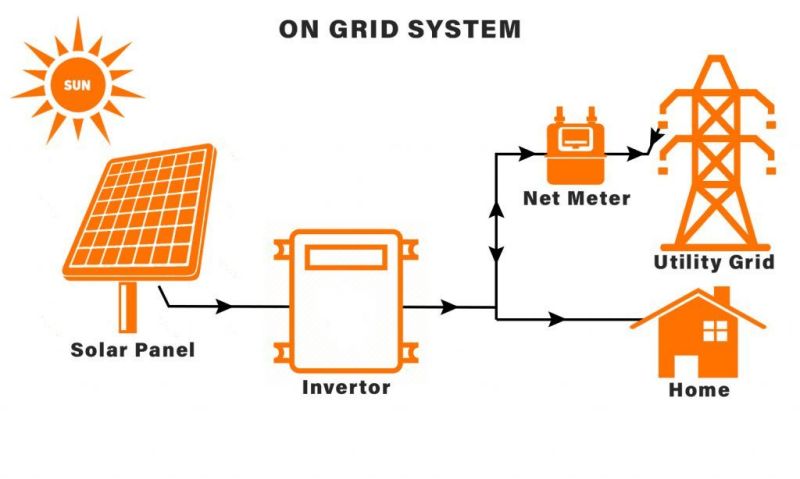
September 2023 As the world continues to shift to renewable energy, grid-connected solar systems are becoming more and more popular. These systems are sustainable solutions for powering homes, businesses and other institutions. By synchronizing with the local grid, these solar systems can use both solar and grid power, ensuring a continuous and reliable power supply.
Grid-tied solar systems work by converting sunlight into electricity through the use of photovoltaic (PV) panels. These panels are typically installed on rooftops or open spaces where they can absorb maximum sunlight during the day. These panels are made up of multiple solar cells that generate direct current when sunlight hits them.
In order to make this power available to homes and businesses, an inverter is needed. Inverters convert the direct current generated by solar panels into alternating current (AC), the standard form of electricity used in homes and businesses. Alternating current can be used to power appliances, lighting systems, and other devices.
Grid-tied solar systems provide electricity once solar panels convert sunlight into usable energy and an inverter converts it into alternating current. At this point, the system synchronizes itself to the local grid. This synchronization ensures that when solar panels are unable to produce enough energy to meet demand, the solar system can draw power from the grid.
The advantage of a grid-tied solar system is the ability to feed excess energy back into the grid. When solar panels produce more power than needed, the excess energy is sent back to the grid. In this way, grid-tied systems allow homeowners and businesses to earn credits or compensation for the excess power they generate, which further incentivizes solar adoption.
Additionally, when the solar panels fail to produce enough power, the grid-tied system automatically draws power from the local grid. This ensures a seamless transition between solar and grid power, ensuring a continuous supply of electricity.
Grid-tied solar systems offer many advantages. First, they allow homeowners and businesses to reduce their carbon footprint by harnessing clean, renewable energy. By relying on solar energy, these systems significantly reduce dependence on fossil fuels, thereby reducing emissions of harmful greenhouse gases.
Secondly, grid-tied solar systems help reduce electricity bills. By generating their own electricity, homeowners and businesses can offset some of their energy consumption, saving money on their monthly utility bills. Additionally, with the ability to feed excess energy back into the grid, homeowners can receive credits or offsets, further reducing overall energy costs.
Additionally, installing a grid-tied solar system can increase property value. As the demand for renewable energy solutions continues to grow, homes and businesses equipped with solar systems are becoming more popular with potential buyers. This increase in value makes it an attractive long-term investment for homeowners.
In summary, grid-tied solar systems offer an efficient, cost-effective, and sustainable solution to meet growing power demands. By synchronizing with the local grid, these systems utilize solar energy and grid power to provide a continuous and reliable supply of electricity. With benefits such as reduced carbon emissions, lower electricity bills and increased property value, grid-tied solar systems are a viable option for a green future.
Post time: Sep-28-2023